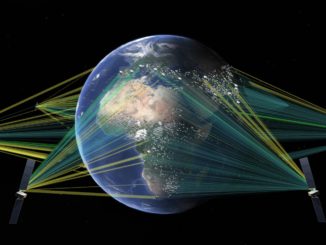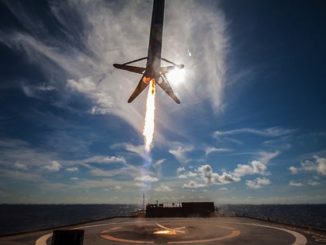EDITOR’S NOTE: Updated May 11 with plans for astronauts to quarantine at home, rather than at Johnson Space Center.
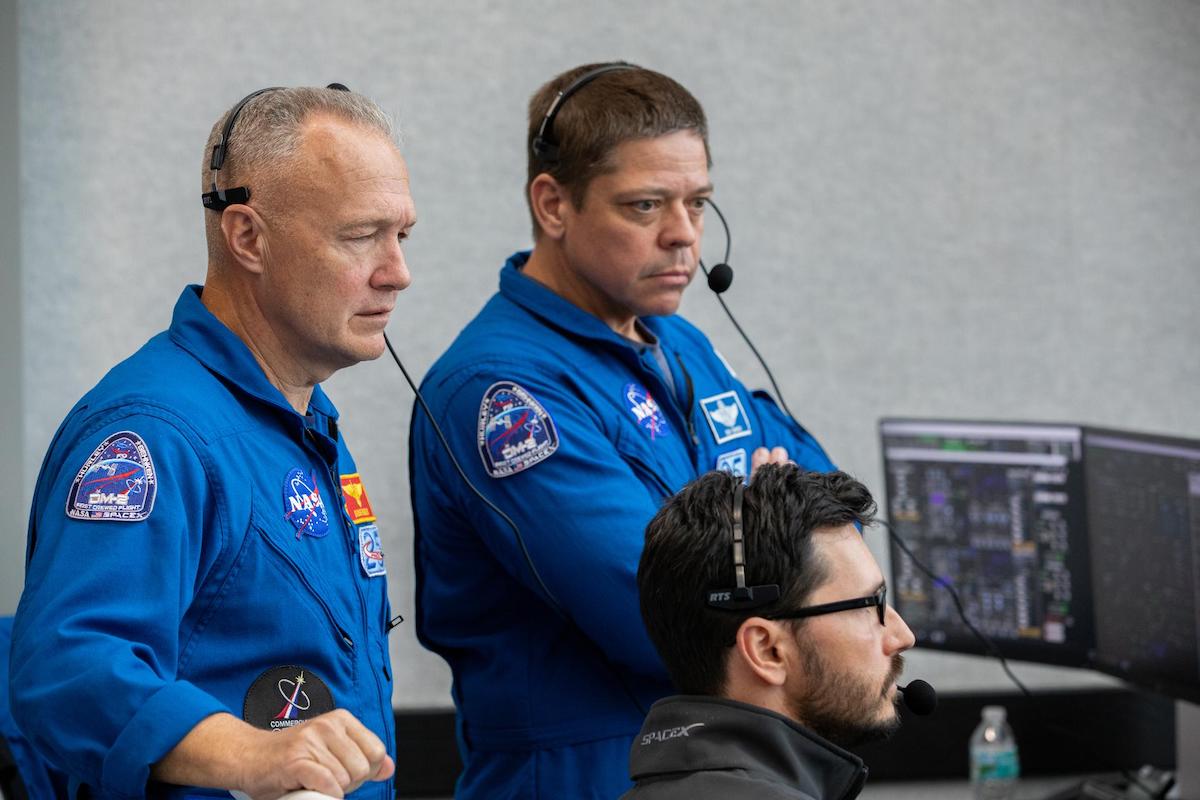
NASA astronauts Bob Behnken and Doug Hurley completed their final training sessions in Houston this week before their scheduled May 27 liftoff on a SpaceX Dragon spacecraft from the Kennedy Space Center, the first launch of humans from the Florida spaceport since 2011.
The two veteran space fliers participated in their final full-up launch simulation Monday, strapping into a Dragon simulator at the Johnson Space Center in Houston and tying in with SpaceX and NASA teams at the Kennedy Space Center in Florida and at SpaceX headquarters in Hawthorne, California.
Behnken tweeted Thursday that the crew’s formal training activities were complete. The astronauts were expected to have a few days of off-duty time before preparing to travel from their home base in Houston to the Kennedy Space Center on May 20.
L-3 weeks means training complete! It also means that the launch and mission memorabilia is coalescing… https://t.co/RKyjWWVa2P pic.twitter.com/7s7QwkZTId
— Bob Behnken (@AstroBehnken) May 7, 2020
Brandi Dean, a spokesperson at NASA’s Johnson Space Center in Houston, said Behnken and Hurley will begin their formal pre-launch quarantine protocol May 13. The astronauts are expected to spend several days in quarantine at home in Houston, then fly aboard NASA aircraft to Kennedy on May 20 to begin final launch preparations.
The pre-launch quarantine protocol is a regular part of all human spaceflight missions, but Behnken and Hurley have effectively been quarantined for weeks, once physical distancing measures were introduced to combat the spread of the COVID-19 viral disease.
In quarantine, the astronauts will only be in close proximity to close family members and SpaceX and NASA personnel who receive medical screening.
“We’re already in quarantine with our families, and we plan to continue that,” Behnken said May 1. “NASA has a plan to get our families to Kennedy in a quarantined fashion, and then to allow us to continue to see each other.”
NASA and SpaceX are continuing with preparations for Behnken and Hurley’s launch on the Crew Dragon spacecraft amid the coronavirus pandemic. NASA is limiting the number of guests permitted at the space center, and the Kennedy Space Center Visitor Complex is not selling tickets for public viewing on NASA property.
The visitor complex temporarily closed in mid-March and has not announced a schedule to reopen.
“What will be different is the causeway and the number of guests who will be able to watch form a distance, normally in large groups kind of looking across the water and seeing the launch happen,” Behnken said. “We’re not expecting that to be possible based on the COVID-19 situation.
“So folks will be hopefully watching at home on their computers, or on television, when we launch into space rather than seeing it with their own eyes, which is a little bit of a disappointment,” said Behnken, an Air Force colonel and veteran of two space shuttle missions. “But with the situation, I think it’s the right thing for folks to stay protected.”
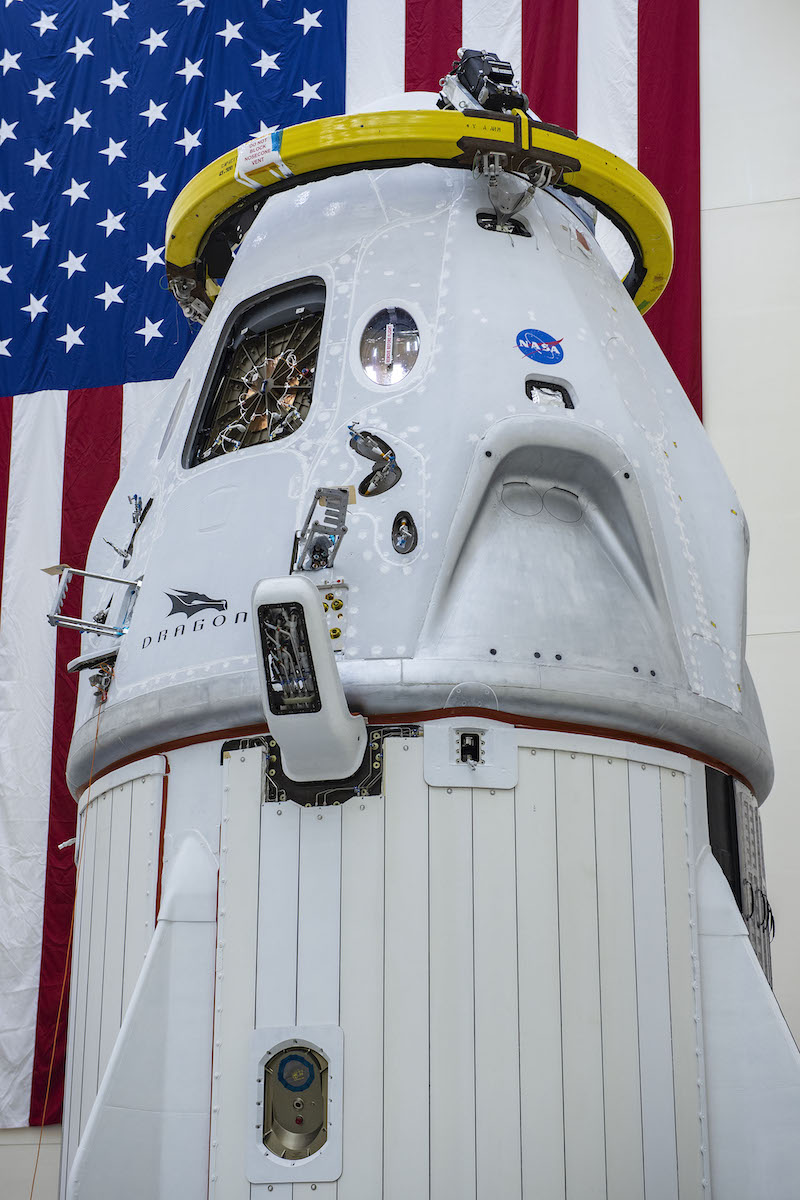
Behnken will serve as the joint operations commander for the Crew Dragon flight, designated Demo-2, or DM-2. The 49-year-old Missouri native will be responsible for the mission’s rendezvous and docking with the International Space Station, along with activities once aboard the orbiting research lab.
Hurley, a Marine Corps colonel who hails from Upstate New York, will be the spacecraft commander on the Demo-2 test flight. His responsibilities include launch, landing and recovery operations.
Behnken and Hurley were two of four NASA astronauts selected in 2015 to train for commercial crew missions on SpaceX and Boeing capsules. NASA assigned the two-man crew to the SpaceX Demo-2 mission in 2018.
NASA has signed a series of funding agreements with SpaceX since 2011 valued at more than $3.1 billion. With NASA funding and technical oversight, SpaceX has developed the human-rated Crew Dragon spacecraft to launch on the company’s Falcon 9 rocket.
Boeing has received a similar series of contracts from NASA to develop the Starliner crew capsule.
SpaceX completed a six-day unpiloted Crew Dragon test flight, known as Demo-1, to the space station in March 2019. The Crew Dragon has also completed two launch abort tests, one demonstrating the ship’s ability to escape an emergency on the launch pad, and another to prove the capsule can safely fire off the top of a Falcon 9 rocket in flight.
Behnken and Hurley are expected to spend one to four months on the space station. Since their assignment to the Dragon test flight, the astronauts have completed thousands of hours of training, much of it inside simulators at SpaceX headquarters in Southern California.
“A lot of times we focus on Crew Dragon, which, of course, is kind of the crown jewel and what carries the astronauts,” said Benji Reed, SpaceX’s director of crew mission management. “But there’s really a whole system that runs from the engineers and design and analysis that goes on, to the factory fabrication and all the testing, and it is all involved in the Falcon 9 launch vehicle, the Dragon spacecraft, the operational teams and all the operational centers.”
The Demo-2 astronauts also completed refresher training on space station systems in Houston. Behnken was certified to perform spacewalks from the space station’s airlock, and Hurley is trained to operate the station’s Canadian-built robotic arm.
The Demo-2 crew was originally training for a stay of just one or two weeks, but NASA extended the duration of the Demo-2 test flight after development delays in the commercial crew program left the space station with just one U.S. astronaut on-board.
NASA astronaut Chris Cassidy is commander of the space station’s Expedition 63 currently living and working on the orbiting research lab. Cassidy launched from the Baikonur Cosmodrome in Kazakhstan on a Soyuz spacecraft April 9 with two Russian crewmates.
Since the retirement of the space shuttle in 2011, Russian Soyuz spacecraft have been the only way for U.S. astronauts to fly to and from the space station. NASA has paid Roscosmos — Russia’s space agency — approximately $3.9 billion for Soyuz seats since 2006.
NASA officials intend to end the cash payments to Russia once declaring the Crew Dragon and Starliner spacecraft operational. Final certification of the Crew Dragon is expected after Behnken and Hurley return to Earth later this year, allowing future Crew Dragons to carry up to four astronauts at a time on regular crew rotation flights to the space station.
Space station managers eventually plan to fly a Russian cosmonaut on U.S. crew missions and a NASA astronaut on Russian Soyuz flights, ensuring at least one representative of each nation is aboard the station at all times.
But Russian officials said they will not approve the plan for mixed crews on U.S. crew capsules until the Crew Dragon and Starliner complete their first piloted space missions.
The first operational Crew Dragon mission is scheduled to launch after the Demo-2 astronauts return to Earth. Three NASA astronauts and a Japanese crew member are assigned to that flight to the space station.
But the schedule for that mission hinges on a successful Demo-2 test flight.
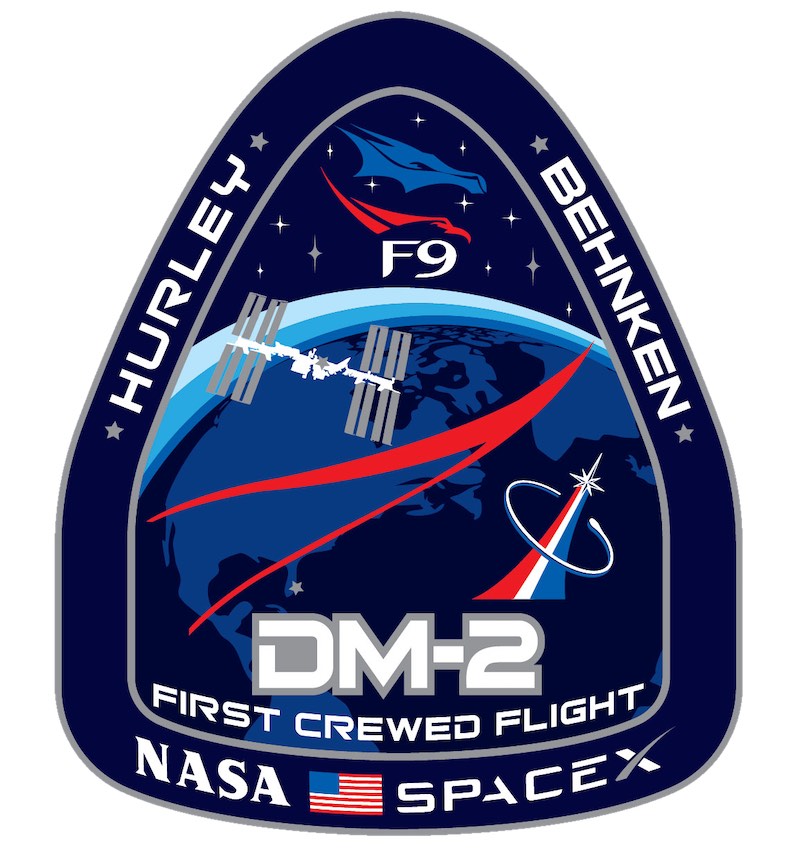
Once at the Kennedy Space Center, Behnken and Hurley will participate in final briefings, spacesuit checkouts, and a full launch day dress rehearsal scheduled for May 23. During the launch day dry run, the astronauts will put on their SpaceX-made flight suits, walk out of the Operations and Checkout Building at Kennedy, and travel to launch pad 39A inside a Tesla Model X.
The crew members will board the Crew Dragon and strap into their seats, running through many of the pre-launch procedures they will execute on the real launch day.
On May 22, the day before the scheduled dress rehearsal, SpaceX plans to fill the Falcon 9 rocket with super-chilled kerosene and liquid oxygen propellants and ignite the first stage’s nine Merlin engines on pad 39A. The engines will fire for several seconds in the static fire test, which is a customary part of all SpaceX launch campaigns.
SpaceX will drain the rocket’s propellant tanks before the crew dress rehearsal on the following day.
NASA and SpaceX officials also plan to convene a flight readiness review around May 21 to give approval to proceed with final mission preparations. Another meeting of top managers is planned May 25 in a launch readiness review.
Liftoff of the 215-foot-tall (65-meter) Falcon 9 rocket with Behnken and Hurley is set for May 27 at 4:33 p.m. EDT (2033 GMT) to begin a nearly nine-minute climb into orbit.
Assuming an on-time launch, the Crew Dragon spacecraft is scheduled to dock with the space station around 11:30 a.m. EDT (1530 GMT) on May 28.
Email the author.
Follow Stephen Clark on Twitter: @StephenClark1.

